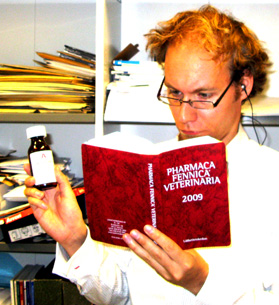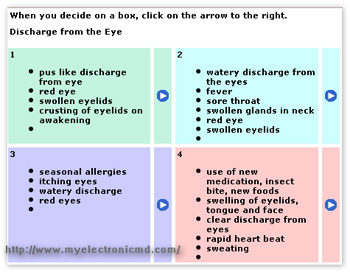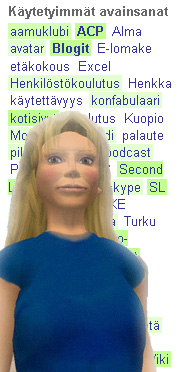 Last week, an 18-year old girl was reported to have diagnosed her own disease in science class at school [cnn.com]. Apparently doctors had missed the granuloma characteristic of Chron’s disease [wikipedia.org] on slides of her intestinal tissue, but the girl had later requested the slides and found the signs of inflammation herself after several years of suffering from the undiagnosed illness. Of course, self-diagnosis is not recommended for serious issues and educated doctors are always needed (even if they are sometimes wrong), but it is already probably clear to most that the age of internet has given people a lot of information (and disinformation) about medicine as well, something I’m sure the professional practicers of medicine probably have noted when their patients come in and start throwing out probable diagnoses and treatments to their illness straight out of Wikipedia.
Last week, an 18-year old girl was reported to have diagnosed her own disease in science class at school [cnn.com]. Apparently doctors had missed the granuloma characteristic of Chron’s disease [wikipedia.org] on slides of her intestinal tissue, but the girl had later requested the slides and found the signs of inflammation herself after several years of suffering from the undiagnosed illness. Of course, self-diagnosis is not recommended for serious issues and educated doctors are always needed (even if they are sometimes wrong), but it is already probably clear to most that the age of internet has given people a lot of information (and disinformation) about medicine as well, something I’m sure the professional practicers of medicine probably have noted when their patients come in and start throwing out probable diagnoses and treatments to their illness straight out of Wikipedia.
We ourselves are the persons most concerned for our own welfare and the typical doctor in Finland has too little time for each patient [terveysportti.fi]), so there might be something that people could do themselves that could help the professionals before coming to the appointment, or afterwards if the medical condition is hard to diagnose. Of course, doctors should always call the shots since wrong diagnoses can sometimes be worse than the actual illness so it’s better to have a real doctor to blame it on if that happens! 😉 One thing that would make life easier for the patient would be if all the accumulated lab tests, x-rays etc. over the years would exist in some database that the patient him-/herself could access to better (and watch results detoriate as one gets older, ha). Something like a medical version of Nintendo’s excercise game Wii Fit [wikipedia.org].
Web tools & gene testing kits
The world of self-diagnosis is evolving on at least two fronts: diagnostics websites (sort of an evolution of the family doctor books) and the latest craze, genetic self testing kits which are more about finding about probabilities that you might get some inherited disease if you carry certain alleles in your genetic luggage.
A popular self-diagnosis help site is My electronic MD: http://www.myelectronicmd.com/
Interestingly, a Slashdot user noticed that making a query using this tool with the symptoms the 18-year old experienced (female, chronic diarrhea, fever) brings up Chron’s disease in the top 3 candidates for the diagnosis.
And let’s not forget owners of pets, there are a few similar services for veterinary medicine also (meant for vets, but pet owners could start using them as well – hopefully not too confidently):
Consultant (University of Cornell): http://www.vet.cornell.edu/consultant/Consult.asp
5-minute Veterinary Consult: https://app.vetconnect.com/5min/toc/000.htm
 Then there are the genetic self testing kits which bring a new dimension to a lot of things – here’s a story on MIT’s Technology Review about the rise of these gene kits which were recently demonstrated on the first annual consumer genetics show in Boston. Imagine knowing that you carry a gene for some disesase that could with some probability shorten your life span. And imagine what your employer or insurance company could do with that information. Well, we’ll see if these kits will spread to Europe and if the whole thing is a fad or not… but if the price is right, who wouldn’t check out what his/her genome would tell about life to come – just like checking this week’s horoscope. Ask the stars, ask the amino acids…
Then there are the genetic self testing kits which bring a new dimension to a lot of things – here’s a story on MIT’s Technology Review about the rise of these gene kits which were recently demonstrated on the first annual consumer genetics show in Boston. Imagine knowing that you carry a gene for some disesase that could with some probability shorten your life span. And imagine what your employer or insurance company could do with that information. Well, we’ll see if these kits will spread to Europe and if the whole thing is a fad or not… but if the price is right, who wouldn’t check out what his/her genome would tell about life to come – just like checking this week’s horoscope. Ask the stars, ask the amino acids…

